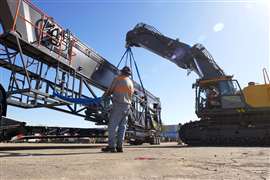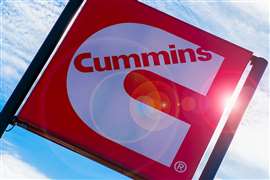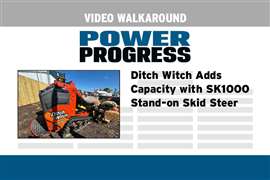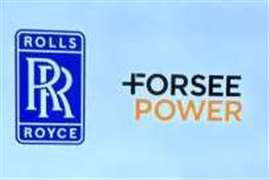Demolition excavators: Factory-fitted or aftermarket, which is better?
02 January 2024
Tony den Hoed, Key Accounts Manager for Demolition Equipment at Volvo Construction Equipment, explores the pitfalls of using a machine fitted with aftermarket demolition features, and the benefits of choosing a factory-fitted demolition excavator.
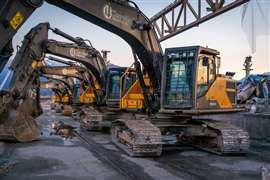 Adding an aftermarket guarding option to a standard excavator can cost upwards of US$20,000 says Tony. (PHOTO: Volvo)
Adding an aftermarket guarding option to a standard excavator can cost upwards of US$20,000 says Tony. (PHOTO: Volvo)
Wrecking balls are tools of the past. Excavators have the capability to dismantle structures more strategically and safely, and many contractors I talk to view demolition as a growth opportunity for their business.
This leaves them with the decision to either purchase a factory-fitted machine that is specifically suited for demolition or convert a standard excavator with aftermarket fittings.
So how do you decide?
Here are the four primary benefits of a factory-fitted machine and potential pitfalls of outfitting a standard excavator with aftermarket solutions.
Four benefits of factory-fitted demolition excavators
1. Enhanced safety
Let’s start with the most important benefit — safety. If the goal is to outfit the machine with a high-reach boom, there are several nuances between a factory-fitted machine and an aftermarket machine that can greatly impact safety.
Almost every manufacturer that purpose builds their high-reach excavators has a modular joint boom concept, but pins that hold the modular joint to the boom connection can differ. Some use a half hook for the top pin and short pins on the bottom.
However, a well-designed demolition machine uses full-length hydraulic pins. Because they’re hydraulic, an operator can pull them out without leaving the cab. They also are more reliable than shorter-diameter pins.
Converting a standard excavator also requires outfitting the cab with a guarding package, which runs upwards of US$20,000 in the aftermarket. That also involves working with a third party whose package may not be designed for that particular machine and offers limited support.
A factory-fitted demo machine comes with a guarding package and full support for the spare parts by the OEM.
2. Strong, stable platform
A factory-fitted demolition machine has much larger boom cylinders, heavier frames and extra counterweight. They also have hydraulically extendable tracks, which give operators a 360-degree working range. Here are cost estimates to add those features to a standard excavator:
Boom cylinders: US$5,000 each
Counterweights: US$14,000
Hydraulic extensions: US$50,000
3. Visibility and dust control
Two additional considerations are tilting cabs and dust suppression systems. In a factory-fitted machine, the cab will tilt up to 30 degrees, giving operators the best view of the jobsite. Aftermarket tilting cabs will likely cost US$40,000 or more to install.
An aftermarket dust suppression system costs approximately US$10,000 and may not include the different misting options found on a factory-fitted machine.
4. Reduced liability
If there’s a problem with a converted machine, it’s not uncommon for third parties to pass blame to each other.
Also, the more a machine is modified in the aftermarket, the more likely its factory warranties will be voided. It’s best to avoid these scenarios by purchasing a single factory solution covered under one warranty.
The bottom line
While there are options to upgrade a standard excavator to a demolition machine, various components built by multiple manufacturers not only cost a lot of money, but they also come at a detriment to safety, productivity and ease of repair.
Purchasing a factory-fitted machine gives you the best opportunity to make high-reach demolition endeavors successful.
POWER SOURCING GUIDE
The trusted reference and buyer’s guide for 83 years
The original “desktop search engine,” guiding nearly 10,000 users in more than 90 countries it is the primary reference for specifications and details on all the components that go into engine systems.
Visit Now
STAY CONNECTED




Receive the information you need when you need it through our world-leading magazines, newsletters and daily briefings.
CONNECT WITH THE TEAM









